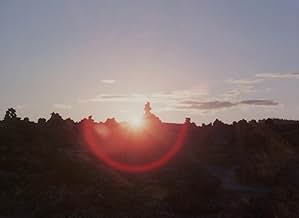NOTE IMDb
7,7/10
2,7 k
MA NOTE
Une histoire de passage à l'âge adulte de jeunes garçons se déroulant dans un étrange village carnavalesque devient la reconstitution d'un souvenir que le réalisateur conserve vingt ans plus... Tout lireUne histoire de passage à l'âge adulte de jeunes garçons se déroulant dans un étrange village carnavalesque devient la reconstitution d'un souvenir que le réalisateur conserve vingt ans plus tard.Une histoire de passage à l'âge adulte de jeunes garçons se déroulant dans un étrange village carnavalesque devient la reconstitution d'un souvenir que le réalisateur conserve vingt ans plus tard.
- Réalisation
- Scénario
- Casting principal
- Récompenses
- 1 victoire et 2 nominations au total
Masahiro Saito
- Longsocks
- (as Masaharu Saitô)
Yôko Ran
- The Hunchbacked Girl
- (as Yoko Ran)
Izumi Hara
- Phantom of old woman
- (as Sen Hara)
Avis à la une
Childhood is something that cannot ever be exploited.
In every film where a childhood is depicted, it's never 1 to 1. It's never reality. Reality is boring and it's not interesting, except for the originator. Shuji Terayama, another director I discovered because of LB, knew this and had to Fellinicise, to Parajanovicise, poeticise, abstracise his childhood. Maybe something thin of reality is still there, but something that's common to all of us.
I will not revisit this film, ever. I didn't connect to it and the visual style alone is not something that powerful for me to cling on. But I can appreciate the symbolism of it, the cinematography, the little stories, and what those stories tried to tell, but I will be frank, not all of them were understandable and need multiple viewings to be really digested.
Time is another big theme here and somehow present in every scene through watches, ticking clocks, time paradoxes and even cicadas in the background.
In every film where a childhood is depicted, it's never 1 to 1. It's never reality. Reality is boring and it's not interesting, except for the originator. Shuji Terayama, another director I discovered because of LB, knew this and had to Fellinicise, to Parajanovicise, poeticise, abstracise his childhood. Maybe something thin of reality is still there, but something that's common to all of us.
I will not revisit this film, ever. I didn't connect to it and the visual style alone is not something that powerful for me to cling on. But I can appreciate the symbolism of it, the cinematography, the little stories, and what those stories tried to tell, but I will be frank, not all of them were understandable and need multiple viewings to be really digested.
Time is another big theme here and somehow present in every scene through watches, ticking clocks, time paradoxes and even cicadas in the background.
In what may or may not be an auto-biography, Terayama explores his past and the relationship we have with our memories, in a grotesque serie of poetic symbolism, bizarre surrealism, haikus, tragic tales of love and innocence, beautiful scenery and interesting cinematography, all wrapped in a self-referential, intellectually thought-provoking exploration of how our lives are affected by our childhood memories. A magnificent balance between indulgent surrealism and thoughtful objectivism, while still not being really experimental.
This is one of the best surreal film ever made right along Alejandro Jodorowsky's "Fando and Lis", Frank Zappa's "200 Motels", and Wojciech Has's "The Saragossa Manuscript." The film is based on Terayama's original play and series of his haiku about his childhood (IMDb's biography on Terayama is excellent and will give you in-depth view of Terayama's art.) The film has timeless Freudian theme about the adolescent trauma, loss of innocence, and deconstruction of self and memories. I have a Japanese VHS copy and watched with my American friends. I tried to translate dialogue as much as possible, it is very hard to keep up with the pace of film and especially his haiku are very hard to translate. However, even with my poor translation, my friends loved the film. I still think in order to understand Terayama's intention of the film, it is important to appreciate his haiku.
I was wondering how I could get a copy with English subtitle. I want to share the film with American friends. If you have seen this film in the U.S., let me know where you have seen it.
I was wondering how I could get a copy with English subtitle. I want to share the film with American friends. If you have seen this film in the U.S., let me know where you have seen it.
Not only surrealism but in general the overall balance of the film and the absurdity of the cinematography made all so natural, made the film what it is. So ahead of its time a simple treasure for the film community.
10mobia
Few films are as audacious and unrelentingly imaginative as this one. Set in a dreamlike rural Japan, the story starts out to be about an adolescent boy's attempt to escape his overprotective mother and then surprisingly becomes a filmmakers desire to confront his own elaborated creation. There is also an effort to reconcile the individual with the collective or old and new Japan through this parade of emblematic images. Gossiping women wear sinister eye patches. An outcast simple-minded woman drowns her own baby and later returns as a sophisticated prostitute. A circus fat lady yearns to have her fake body inflated by a dwarf. Curious and astounding scenes abound, all contributing to an overwhelming experience of a creative mind interrogating itself.
Le saviez-vous
- AnecdotesThis film was one point included in the Official Top 250 Narrative Feature Films on Letterboxd.
- ConnexionsReferenced in Ore 5.35. tangenziale est (2008)
Meilleurs choix
Connectez-vous pour évaluer et suivre la liste de favoris afin de recevoir des recommandations personnalisées
Détails
- Durée1 heure 44 minutes
- Couleur
- Mixage
- Rapport de forme
- 1.37 : 1
Contribuer à cette page
Suggérer une modification ou ajouter du contenu manquant











